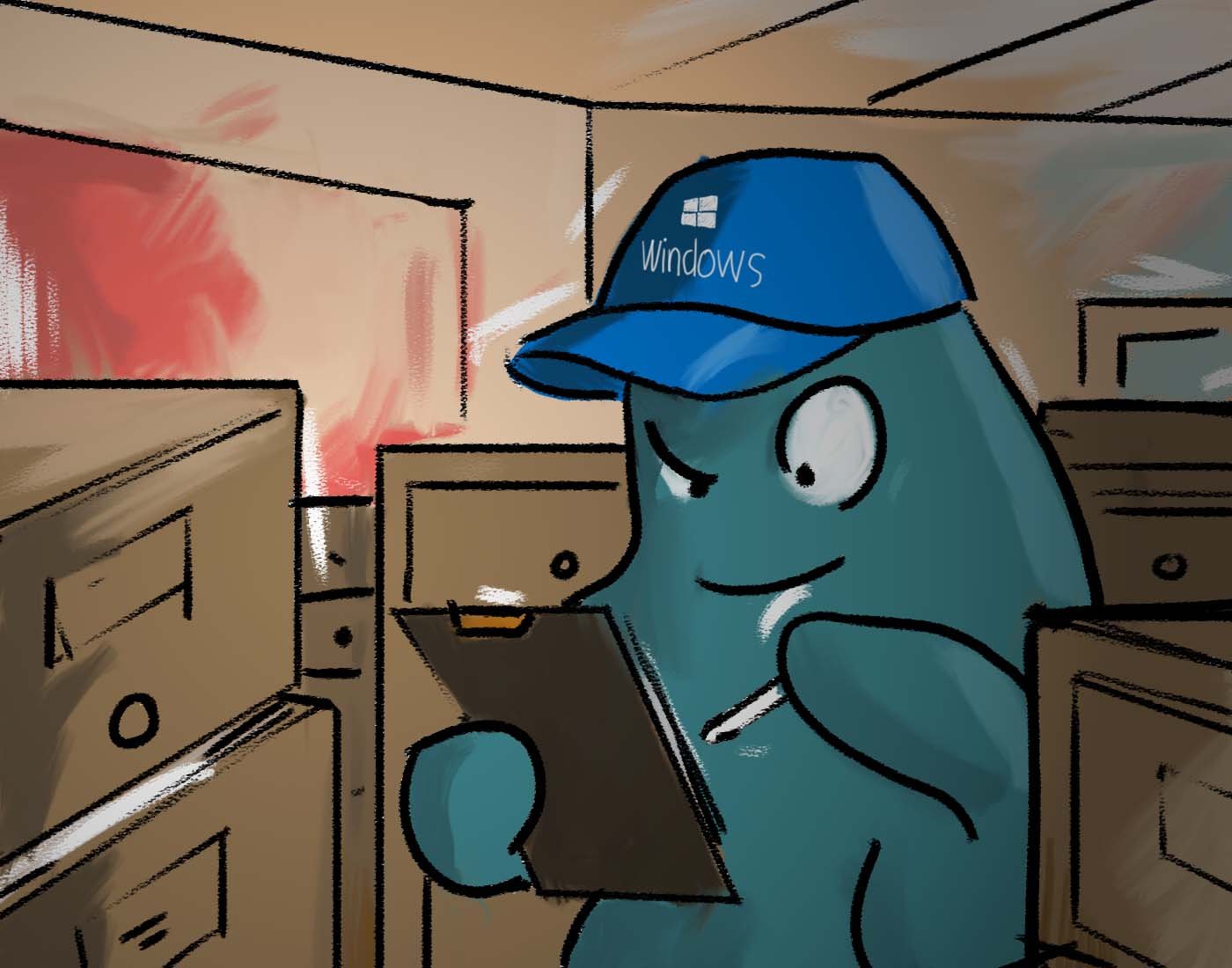Sometimes, it is common to notice that the computer runs slower than usual. When it comes to working, this is a problem since productivity and efficiency in tasks are significantly reduced.
In addition, for people, it means an increase in stress and frustration at not being able to develop and complete the most straightforward jobs.
If you have ever identified with these feelings because your computer was running as slow, it is probably due to a lack of RAM.
For that reason, at Rambox, we show you the best tricks to free up RAM and recover your computer’s speed so you can perform your functions typically and increase your productivity.
What is RAM?
RAM (Random Access Memory) is the main memory of any device, from computers to cell phones. It temporarily stores the data of the programs you are currently using. It manages the data of the running applications, so the more RAM you have, the more applications you can handle simultaneously. Therein lies its importance.
RAM has two fundamental characteristics that differentiate it from other types of storage:
- It has tremendous speed.
- Data is stored only temporarily. When you reboot or turn off the device, the data stored in RAM will be lost.
The RAM is a physical component of the device that comes in the form of a card connected directly to the device’s motherboard. RAM cards have different integrated memory modules connected, and in devices such as computers, there are slots to add multiple RAM cards to increase memory.
Mainly there are two types of RAM:
- DDR (Double Data Rate): they can perform two operations in each clock cycle. They are activated twice in each clock signal cycle, either by level (high or low) or edge (rising or falling).
- SDR (Single Data Rate): they perform only one read or write operation.
Initial steps to free up RAM
The following tips for freeing up RAM can be used regardless of whether you have a Windows or Mac device. Here is a list of simple steps before taking more aggressive measures to free up space:
1. Restart PC
As mentioned above, RAM is characterized by storing data temporarily and only for the programs running at the time. Processes and programs are running in the background without your knowledge, so restarting the computer will clean up the processes running in the background that could consume your PC’s RAM.
For this reason, restarting your computer is the easiest way to free up RAM storage space without the risk of losing files or documents you are working on.
2. Clear RAM cache
The cache relies heavily on RAM, using short-term memory to reload pages you have recently visited. This helps you browse the Internet quickly, but it can demand a large amount of RAM that might be needed to finish other, more critical tasks.
If you have already tried restarting your device, clearing your browser’s cache may be your solution to free up RAM.
3. Try other browsers
There are many options when choosing a browser, and some browsers are better designed than others to allocate and manage RAM usage.
We know that habits are hard to change, and we all have a favorite browser. However, if you’ve cleared your browser’s cache and still notice that it’s running slowly, it may indicate that you need to try new, more intelligent browsers.
Google Chrome may be one of the favorites and most used by users, but it is one of the most RAM-consuming browsers. If you regularly use Google Chrome and your PC is running slow, we recommend trying browsers like Microsoft Edge, Mozilla Firefox, Brave, and Opera.
4. Update applications
Updating applications is essential, firstly, for security reasons. Secondly, updates can help you reduce RAM waste.
When a program does not return RAM to the pool once it has finished using those resources, it is called a memory leak. These leaks, over time, will use an increasing amount of RAM space and cause a lack of resources for the other applications on your system.
Updates are based on fixing bugs and problems from previous versions, so it is expected that if an application has a memory leak, the update will include a fix for this problem.
Also, the latest updates usually include optimizations and improvements so that the software can use less RAM.
5. Remove unused extensions
The extensions that browsers allow you to install can be a handy tool to increase productivity and efficiency in our work. But it is one of the most frequent causes of RAM consumption.
Extensions are loaded into memory when the browser is opened and store many resources over time. It is common to install extensions occasionally or to try something new and then forget to delete them. A simple way to free up RAM is to prevent extensions that you do not usually use from consuming RAM.
7 ways to free up RAM on your Windows 11
If the above tips have yet to help to free up RAM and make your device recover or increase its operating speed, it’s time to make changes a little more technical. Here is a compilation of 7 ways to free up RAM memory on a Windows 11 device:
1. Keep all your apps in one place
Rambox is a tool that makes your workspace simpler by bringing everything you need into one interface. Its main goal is to eliminate the need for using multiple desktop apps or opening various websites in your browser, which can eventually slow down your computer.
Wondering how Rambox can speed up your PC and save its energy? We’ve got the scoop!
We handpicked 10 of the most-used apps by our users every month. Then, we compared how much power they chug when run in Chrome versus through Rambox.
Here’s the kicker: opening these apps in your browser sucks up around 1700MB of your PC’s resources.
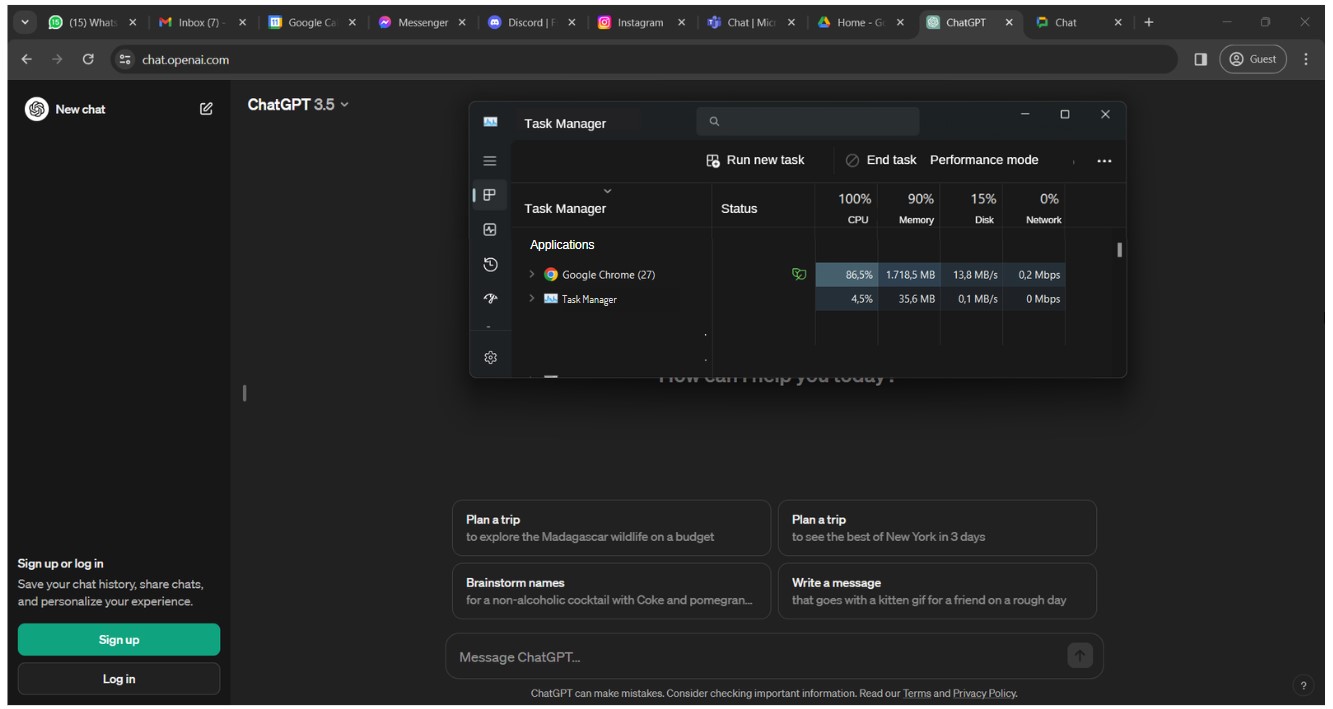
But switch to Rambox, and they slim down to just about 1500MB. That’s a solid savings of 11.76%!
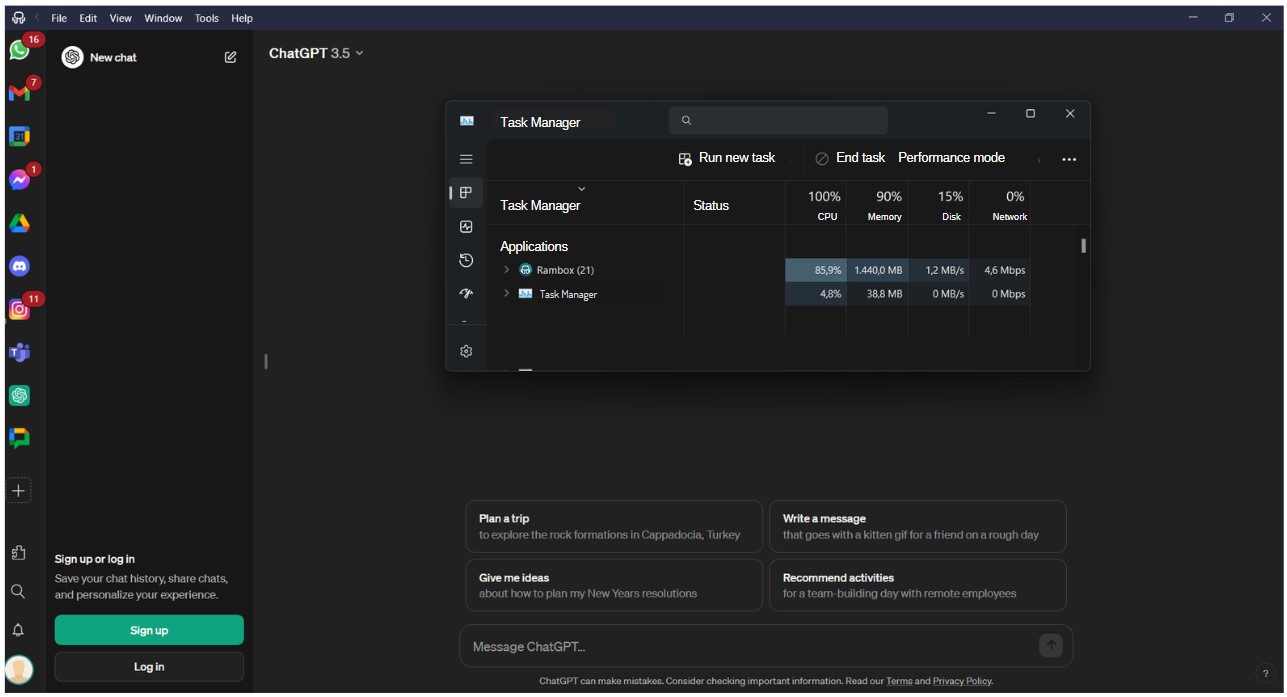
Plus, Rambox comes with a nifty app manager. It’s like mission control for your apps, showing you exactly how much energy each one is using. You can even pause or stop the ones that are draining too much power. Just pop open the quick search panel (Alt+Shift+K) and type “app manager” to find it. Easy as pie!
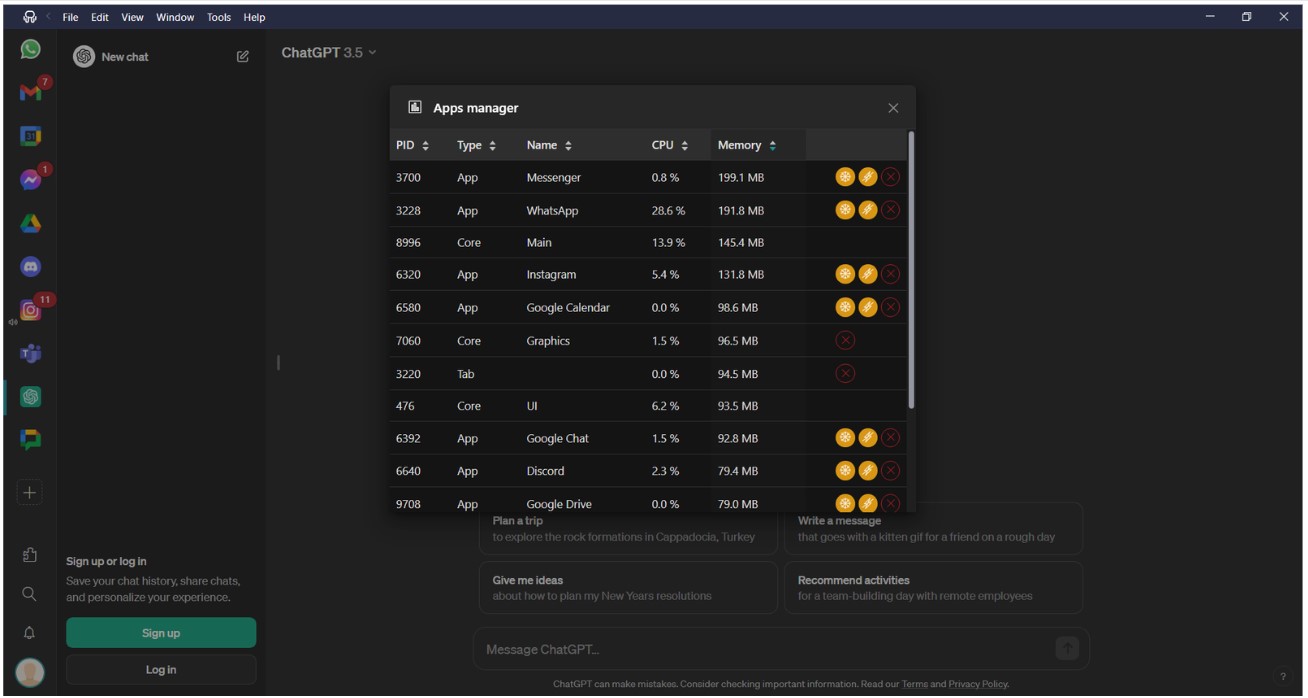
Rambox also lets you quickly turn off apps you’re not using, which can help save resources. Just right-click on an app and choose “Enabled” to turn it on or off.
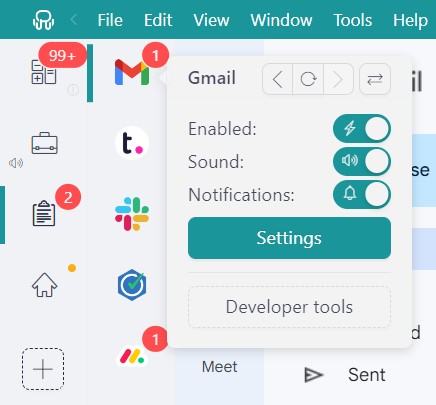
Plus, Rambox has a cool “Hibernation” feature – it can automatically put apps to sleep after they’ve been inactive for a while. This stops them from using up your computer’s resources in the background. You can set how long an app can be inactive before it goes into hibernation mode. To enable this feature, you only have to right-click on the app or workspace where you want to set a hibernation time, select “Settings” and set the time.
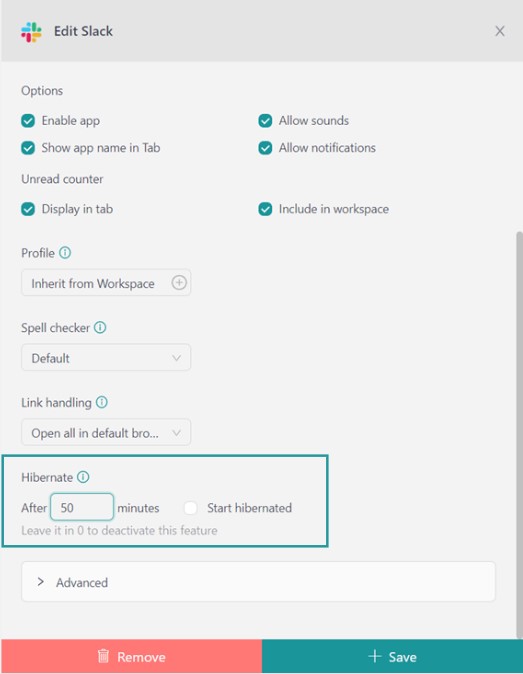
And that’s not all! If Rambox detects high CPU consumption by an app, it will warn you immediately with a popup message so you can disable, hibernate, or reload the troubling app right away.
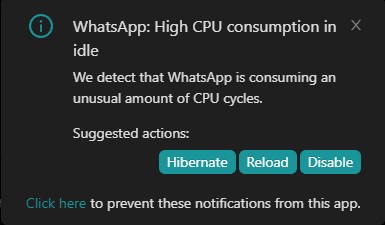
Sounds good, doesn’t it? Sing up and download Rambox for free on Windows, Mac, or Linux and speed up your PC.
2. Task Manager
Windows Task Manager makes finding the source of RAM exhaustion simple. This tool shows exactly which programs and processes are consuming the most RAM.
To access the task manager and check the status of your RAM, follow the steps below:
- Press Ctrl+Shift+Esc or Ctrl+Alt+Del or click start and type “task manager” in the search engine.
- Once the task manager is open, click on the “Processes” tab and the “Memory” heading. In this section, you will see a list of the programs and processes that consume more RAM, ordered from highest to lowest.
With this list in front of you, you can close the applications that are consuming the most RAM at that moment, which you can temporarily do without. To close these applications, you must right-click on the application you want to close and choose the “End task” option. The application will close immediately, and you will free the RAM it was consuming.
It is also possible that an application accumulates a lot of information while running. In this case, it is OK to continue the task but to restart it. To restart applications, you must go back to the “Processes” section, right-click on the application that is accumulating data, and click “Restart”.
Finally, a high RAM consumption may be due to all those applications that, by default, start with the system when you turn on the computer. To disable this function, go to the “Startup” tab in the task manager. From this section, right-click on the applications and select the “Disable” option to prevent the application from starting with the system.
3. Uninstall unused programs
Once you have identified the programs and applications that consume the most RAM, thanks to the task manager, you may specify an application that consumes a large amount of memory. They may be applications you hardly use or applications you need at specific times. In either case, the best thing to do is to uninstall the application and look for a more efficient alternative.
To uninstall applications, you must go to “Windows Settings” and click on the “Applications” section. Select “Apps and Features,” find the application consuming RAM, and choose the “Uninstall” option. Some programs are best uninstalled from the old application uninstaller of previous Windows versions. To find it, scroll down to the bottom of this menu and click on the “Programs and Features” option.
4. Reduce background applications
Some applications are programmed to run in the background, although we are not using them. These types of applications are not only often responsible for RAM shortages but also for excessive battery and bandwidth consumption. For example, applications running behind the scenes can help receive notifications or perform automatic updates. However, when they become a nuisance when performing tasks, monitoring the applications and disabling them as needed becomes a priority.
To disable applications running in the background, you must go to “Settings” and click on the “Privacy” section. Using the category panel on the left side of the window, scroll down until you find “Background Apps.” Here you will find a list of such applications, and you can enable or disable any of them.
5. Clean page file
The page file can prevent your computer from slowing down even when RAM is almost exhausted. It is stored on the hard disk, so unlike RAM, it is not automatically deleted when the PC is turned off or restarted.
It is possible to program the computer so that the page file is automatically deleted when the device is restarted, although this must be done manually.
To program this function, click “Start” and type “Registry Editor” in the search panel. The computer will ask if you want the registry editor to change your device. You must click “Yes.” Once these steps are done, you must scroll down on the left side of the window and click on “HKEY_LOCAL_MACHINE.” Once in this section, you will click on the following sections (consecutively):
- SYSTEM
- Current control set
- Control
- Session Manager
- Memory management
- ClearPageFileAtShutdown
- Value data
- Enter value 1
- OK
6. Swapping images for performance
As technology develops, so does the design and aesthetic multimedia content that goes with it. Images, videos, and animations consume a large amount of RAM. For this reason, if your computer is slowing down due to a lack of RAM and the aesthetic aspect of the device is not a priority when performing your tasks, you should consider changing the visual effects to have a better performance.
To decrease the visual effects of your PC, you must first go to the “File Explorer” located in the taskbar or the start button. Click “This PC” on the left and select the “Priorities” option. Click on the “Advanced System Settings” option and open the “Advanced” tab at the top edge. Once in this section, select the “Performance” option and “Adjust for best performance.” In this section, you can disable all animations or decide which visual effects you want to leave active or inactive.
7. Make sure your computer is malware-free
If you have tried all the above tips and your computer is still running slowly and inefficiently, your device may have malware. Malware is a term used to describe any malicious program or code harmful to systems, attempting to invade, damage, or disable computers, computer systems, networks, tablets, and mobile devices, thus interfering with their regular operation.
It would help if you scanned your computer for malware. To do this, you must open the “Windows Security Settings”. Then select “Threat and Virus Protection” and click “Scan Options.” Once in this section, choose “Windows Defender Offline scan” and click “Scan now.” It is essential that before doing this process, you make sure that you have saved all open files and closed applications and programs because the computer will restart, and you could lose this data. The offline exam takes approximately 15 minutes to run.
To view the test results, go to “Windows Security Settings” once the PC has restarted. Select “Threat and Virus Protection” and click “Virus Protection History”. The Windows Defender scan will automatically detect and remove the malware or, failing that, quarantine it.
Preventively, in order not to be affected by malware again, we recommend using anti-malware to detect any possible malicious software and avoid system malfunction. In addition, anti-malware will also allow you to reset the proxy, Winsock, TCP/IP, firewall, and Host file settings.
If you’ve already tried all these steps to reduce RAM usage but your PC is still running slow, it might be time to check out some of the best optimization tools for Windows to help boost performance and keep things running smoothly.
If you are overwhelmed by the number of applications you have to work with, consuming your RAM, and making your desktop extremely low, try Rambox for free. All you have to do is download the program, configure it to your liking, and enjoy its functionalities. No cards, no cheating, it’s that simple!
FAQ
How much free RAM should I have in Windows 11?
In Windows 11, it’s recommended to have at least 2-4 GB of free RAM for general usage such as browsing the internet and using office applications. For more intensive tasks like gaming or video editing, having 8-16 GB of free RAM is ideal to ensure smooth performance. Monitoring your RAM usage through the Task Manager can help you determine if you have enough free RAM for your needs.
How to free up more RAM on Windows 11?
To free up more RAM on Windows 11, start by restarting your PC to clear temporary data and stop background processes. Clear your browser’s cache, switch to a more memory-efficient browser if necessary, and update your applications to prevent memory leaks. Disable or uninstall unused browser extensions and identify memory-hogging tasks in Task Manager to end them. Uninstall programs you no longer need and disable unnecessary background apps in the settings. Clean the page file through the Registry Editor, adjust visual effects for better performance, and scan for malware using Windows Defender. These steps can help you manage your system’s memory effectively.
What can I do if my RAM is still low after trying these tips?
If your RAM is still low after trying these tips, consider upgrading your physical RAM. Adding more RAM can provide a significant performance boost, especially if you frequently run memory-intensive applications. Check your device’s specifications to ensure compatibility before purchasing additional RAM.
Are there any tools to help manage RAM usage better?
Yes, tools like Rambox can help manage RAM usage by consolidating multiple applications into one interface, reducing the need to run several memory-consuming apps simultaneously. Rambox allows you to monitor and control app energy consumption, enabling you to pause or hibernate apps that are not in use, helping to free up RAM and improve overall performance.
Why is my computer still slow even with enough free RAM?
If your computer is still slow despite having enough free RAM, other factors might be affecting its performance. These could include a slow hard drive, outdated drivers, or a cluttered operating system. Regularly updating your system, performing disk cleanups, and ensuring your hardware components are functioning properly can help maintain optimal performance. Additionally, ensure your system is free from malware by running regular scans with Windows Defender.


